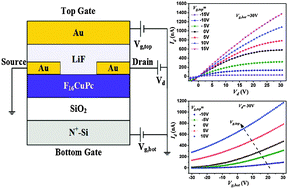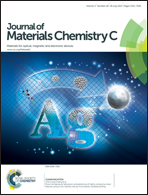Operational dynamics and architecture dependence of double-gate OFETs with balanced top and bottom channel characteristics
Abstract
A double-gate organic field-effect transistor (DGOFET) utilizing thermally evaporated lithium fluoride (LiF) as the top gate dielectric and fluorinated copper-phthalocyanine (F16CuPc) as the active channel material was reported in this article. XRD and AFM analyses manifested that the fabricated LiF films on the F16CuPc channel layer were highly dense polycrystalline, uniform, and flat. A comprehensive and systemic study of operational dynamics and architecture dependence of DGOFETs was reported herein. Three different operating modes of DGOFETs were introduced and demonstrated, which indicated that controllable device performances (considering output current, threshold voltage, etc.) could be obtained by double-gate architecture, and DGOFETs working in the synchronized mode exhibited high field-effect mobility, low threshold voltage (absolute value), and large transconductance. Furthermore, the DGOFET based F16CuPc showed a better gate modulation effect, which could achieve a switch from normally-on to off-state in double-gate mode. The successful operation of the fabricated DGOFETs also indicated that LiF is a promising material as the dielectric for realizing high-performance and patterned top-gate OFETs.


 Please wait while we load your content...
Please wait while we load your content...